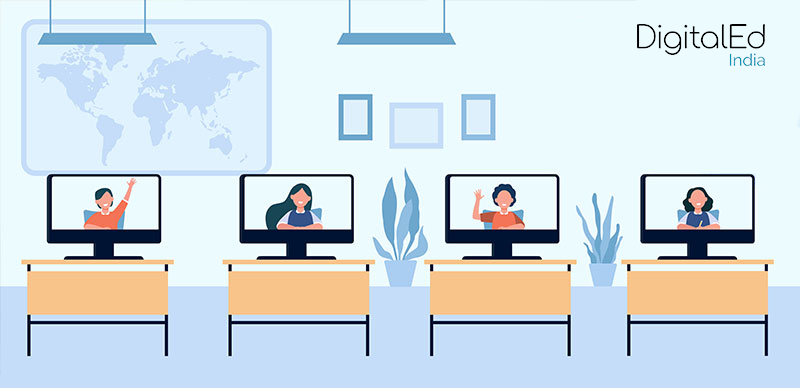Has COVID-19 shifted education in India to flip learning?

The covid- 19 outbreak will be remembered for a long time as “the time everything changed”. The pandemic changed every aspect of our day-to-day life, be it the way we lived or the way we learned. The outbreak affected students and teachers across 150 thousand schools, 1,028 universities, 41,901 colleges, and 10,726 standalone institutes. From these facts alone it is clear that the education system of India received the heaviest blow from the pandemic crisis.
This proves to be a new challenge for both teachers and students. Many teachers and institutions have initiated teaching virtually through online platforms like youtube, zoom, etc. but our traditional methods of Fixed Classroom and in-person teaching have left a lot of students and teachers in a stumble.
These platforms have been very helpful for students to learn since the initial lockdown in March 2020. But the inefficiency of these media and business meeting platforms has raised the demand for a change in a learning model that aligns with today’s learning needs.
Some features that video-conferencing softwares lack for efficient online learning:
- Teachers should be able to utilize teaching tools like PowerPoint presentations and virtual whiteboards to distribute supplementary learning materials.
- The platform should provide features to post reminders, assign homework, and administer tests. The platform should serve as a centralized repository for all learning materials.
- The platform should provide tools for versatile communication. It’s difficult to ask and clear doubts by just a “raise hand” feature that only works during the time of the active call. Instead, the platform should provide effective communication and doubt-clearing functionality for students.
- The platform should provide a framework for tracking students’ progress that also includes analytical features for producing real-time reports. It should also compile and store all student submissions for easy retrieval.
It’s time educational institutions in India started accepting the challenges and adjusting to the new normal of the pandemic-hit 21st century.
What exactly is the Flipped Classroom and Flipped Teaching Model?
Blended learning or hybrid learning is the method of teaching in which a student learns through both offline and online forms of schooling. The concept of blended learning involves the integration of technology with digital learning where instructor-led classes are provided to students through digital technologies.
The flipped teaching model is a type of blended teaching model where students are introduced to educational content through online(video lectures) or offline(books) resources at home and practice working through it at school.
A flipped classroom is one where students review the study materials before class as self-paced study. The in-class teacher time is devoted to discussing the study material with help of group discussions, engaging exercises, and interactive activities all under the guidance of the teacher. This gives students an interactive and knowledge-friendly platform to acknowledge their curiosity and outgrow their potential.
Flipped Classrooms: The future of the Indian Education System
Through Flipped teaching model, approximately 320 million students in India alone will be able to access an education system that doesn’t end at the last bell of school. This modern approach to education gives students a knowledge-friendly environment without the pressure of a formal classroom. Moreover, with timely execution of exams and co-curricular activities, it ensures time discipline and continuous evaluation.
Advantages of Flipped Teaching Model:
● Self-Paced Education: Since the mode of study is online and flexible, students get to learn at their desired speed.
● Interactive Education: Flipped Learning encourages engaging activities and live discussions on study materials making it way more interactive compared to traditional teaching models.
● Up to Date Knowledge: With online classes and study materials, students can know the latest findings and understand concepts through various sources without getting outpaced by the advancement of technology and industry demand.
● Student-Centered Education: The most significant feature of Flipped Learning Model is a customized and student-centered curriculum that allows every student to approach the syllabus in their unique way.
Final Thoughts:
One fact covid outbreak proved is that change is inevitable and it can happen anytime. Although we can’t stop this change it’s always wise to prepare for it. Flipped classrooms might have technological hurdles and initial adjustments. However, it’s a necessity to provide seamless learning and knowledge to students. The only way forward is to use these hard times as an opportunity to transform and enter a new better era of education by flipping the traditional teaching model into a modern one.